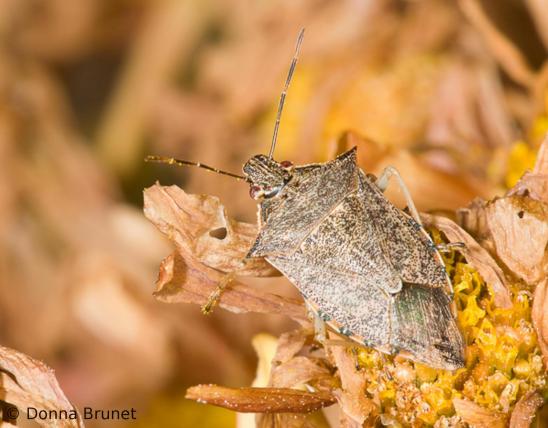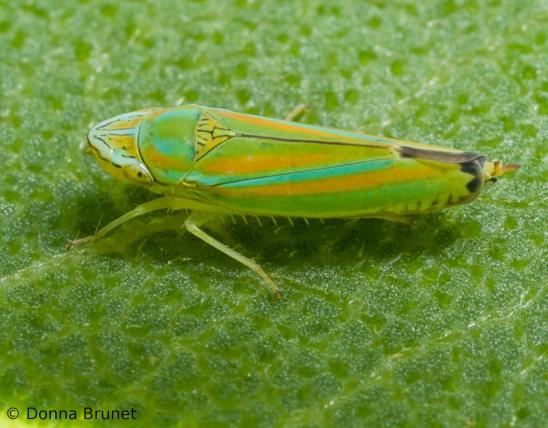
The green stink bug is one of many species of stink bugs. Like others in their family, they emit a foul odor when they are harassed or crushed. Also like other stinkbugs, the folded wings form an X pattern on the back.
Green stink bugs are some of the first insects to become active in early spring, and the sight of them is rather cheerful after a long winter. Their bright green color is conspicuous against the drab tan leaf litter as they wander slowly about.
They mate in the spring and lay eggs on the undersides of leaves. About a week later, black nymphs hatch. As they get older, they grow, molt, and look different. After the last molt, they have wings and are green adults.
Green stink bugs eat a wide variety of plants. Like other true bugs, they have strawlike mouthparts adapted for sucking nutrients, especially from developing seeds and fruits. Green stink bugs feed on plants and are occasionally pests.
Similar species: The southern stink bug (Nezara viridula) is also green. You have to look close to tell it apart from the green stink bug. The southern stink bug has a small black dot in each lower corner of the scutellum (the shieldlike or shoulderlike plate behind the head). The outer antennae segments are mostly reddish. The flattened outer margin of the abdomen (the connexivum) is basically all green, lacking the series of dark dots and yellowish color characteristic of the green stink bug.
Learn more about this and other stink bugs on their group page.


































